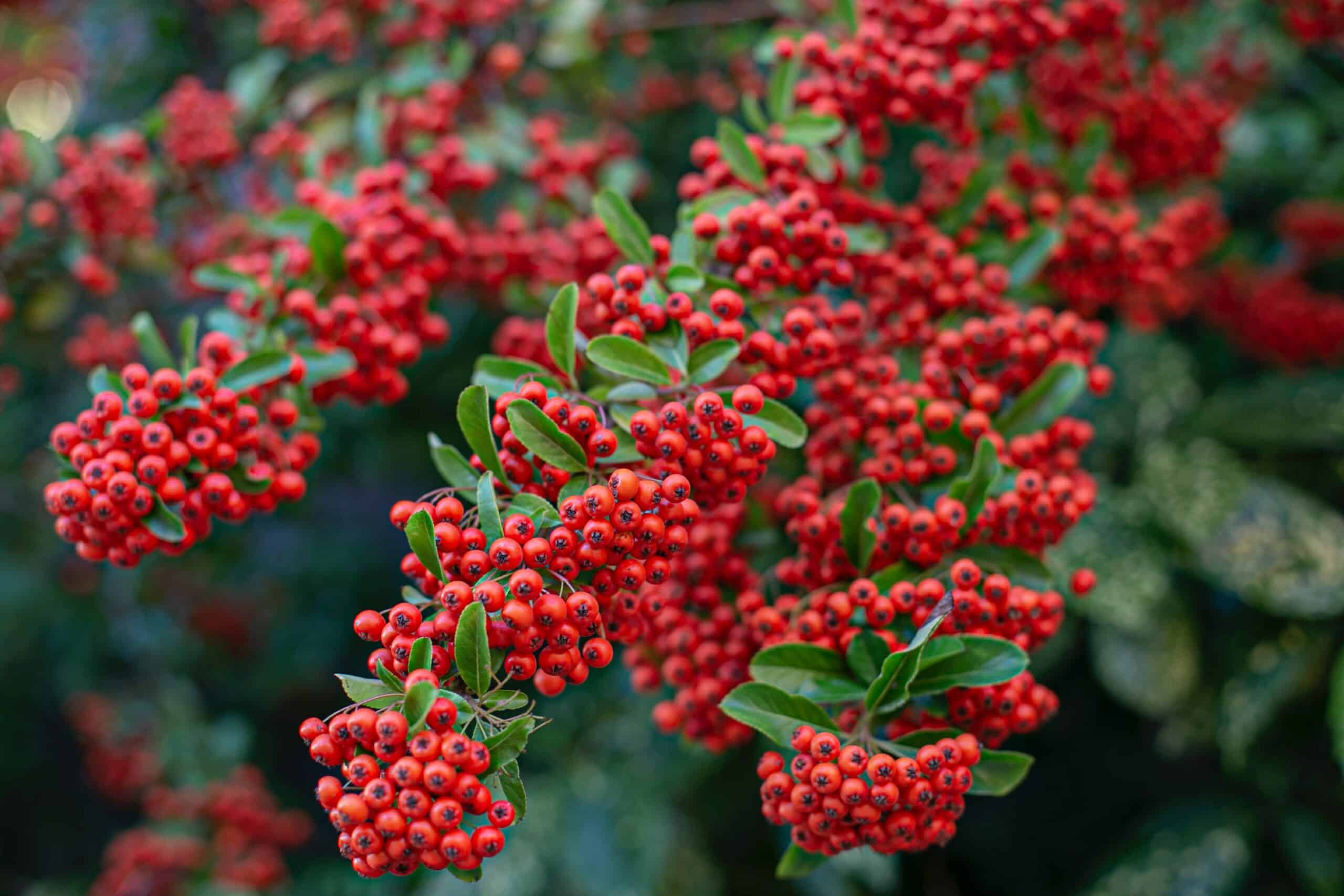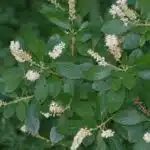Are you seeking to spruce up your landscape with a stunning shrub? Yaupon holly is an ideal choice for those who want to bring a touch of the natural world into their backyard. This beautiful evergreen provides year-round interest and can quickly become a focal point in any garden setting. Not only does this plant have glossy, eye-catching foliage, but it’s also easy to grow and care for – even with minimal experience!
This article will provide an overview of yaupon holly, including tips on planting, pruning, and cultivating this attractive shrub. We’ll explore the essential facts about this popular landscape plant, so you can make informed decisions when it comes to adding yaupon holly to your own garden. With its vibrant color and unique texture, this evergreen will quickly become a showstopper in any outdoor space.
If you’re looking for a reliable shrub that will add charm and character to your yard, yaupon holly is an excellent choice. Read on to learn more about how to grow and care for this exotic evergreen!
Overview Of Yaupon Holly
Yaupon holly (Ilex vomitoria) is an evergreen shrub that’s native to the Southeastern United States. It’s known for its glossy, dark green leaves and red berries, which are a favorite of birds. Yaupon holly is easy to grow and care for, making it an appealing choice for gardeners looking to add color to their landscape.
When growing yaupon holly, the most important thing to consider is choosing the right location. It prefers full sun but can tolerate partial shade, so be sure to select a spot that gets at least four hours of direct sunlight each day. Yaupon holly also requires well-draining soil and thrives in areas with mild winters and hot summers. Additionally, it’s important to provide regular water during the summer months when there’s not enough rainfall.
Yaupon holly is a low-maintenance plant that doesn’t require pruning or fertilization. However, it does benefit from occasional fertilization with a balanced fertilizer in spring or early summer. As long as you choose the right location and provide adequate hydration during dry periods, your yaupon holly should thrive and bring years of beauty to your landscape. With proper care, this versatile shrub can serve as a hedge, accent plant or even topiary specimen in any garden setting.
Choosing The Right Location For Yaupon Holly
Choosing the right location for yaupon holly is key to its success. When selecting a spot, it’s important to pay attention to light and soil quality. Yaupon holly prefers full sun or partial shade, so a spot with several hours of direct sunlight each day is ideal. It also prefers moist, well-drained soil that is slightly acidic. If you’re unsure of your soil type, it’s best to have it tested before planting. Additionally, avoid planting near large trees or shrubs where competition for water and nutrients may occur.
When considering placement, keep in mind that yaupon holly can grow up to 15 feet tall and wide in the landscape. Planting too close to buildings or other structures may lead to pruning issues later on. As this plant is evergreen, it will remain visible year-round; thus, consider if this is desirable before selecting a site for planting.
It’s important to be aware of your climate zone when picking a spot for yaupon holly as it thrives in USDA hardiness zones 7 through 9. In colder areas, container plants can make excellent options as they can be brought indoors during winter months when temperatures dip below freezing. With the right environment and care routine in place, yaupon holly will flourish and bring beauty to any landscape! Moving forward we’ll discuss how to get your yaupon holly off on the right foot by providing proper planting instructions.
Planting Instructions For Yaupon Holly
As one embarks on the journey of planting Yaupon Holly, the first step must be taken with care. Like a river seeking its own course, it is essential to provide the right location and conditions for these shrubs to thrive. Planting instructions are key to ensuring your Yaupon Hollies reach their full potential.
Like all living things, Yaupon Hollies need specific environmental requirements in order to grow and flourish. It is important to select an area with well-draining soil and plenty of sun – ideally six hours or more each day. A bit of shelter from cold winds is also appreciated by these hardy plants. If planted in full sun in the southern United States, some shade should be provided during the hottest months of summer for maximum success.
Now that you’ve found your perfect spot, it’s time to get planting! For single specimen hollies, dig a hole twice as wide as the root ball and just as deep. Place the plant in the hole so that its roots are even with or slightly above ground level. Gently backfill around the plant until all of the roots are covered and firm up the soil around its base with your hands as you go. Give it a good drink of water right away and then continue with regular watering for several weeks after planting to ensure establishment.
With proper attention given to planting instructions and site selection, you can create a beautiful landscape feature with Yaupon Holly that will last for years to come! Knowing how much water these shrubs require is essential for their health; let’s explore this next step in detail.
Watering Requirements Of Yaupon Holly
Taking proper care of Yaupon Holly is like raising a child. It requires patience, dedication and diligence to ensure it thrives in its environment. Just like a newborn baby, Yaupon Holly needs proper nourishment and guidance to grow into a healthy and vibrant plant.
Watering requirements for Yaupon Holly are very important for its overall health. The soil should be kept moist but not wet to prevent root rot. During the hot summer months, water the soil deeply once or twice per week depending on the weather and how quickly it dries out. If grown in containers, water more frequently as needed to keep the soil from drying out completely. Mulch around the base of the plant can help retain moisture as well as provide additional nutrients.
It’s also important to monitor for signs of stress such as wilting or yellowing leaves which may indicate that it isn’t getting enough water. In these cases, it’s best to slowly increase watering until symptoms improve. With regular watering, Yaupon Holly will have all that it needs to remain healthy and happy!
Sunlight Needs Of Yaupon Holly
Sunlight needs of Yaupon Holly are quite specific, and if you want your plant to thrive, it’s important to provide the right balance. To create an ideal environment for this member of the Ilex genus, let’s take a look at the requirements in more detail. Miraculously, with a little care and attention you can craft an inviting home for this unique shrub.
When it comes to sunlight needs, Yaupon Holly enjoys direct sun in areas with mild winters – think coastal locations or inland areas with very mild winters. Here is a list of specific requirements:
- Full sun is best in areas where winter temperatures don’t dip below 10°F
- Partial shade is better in climates where temperatures stay above 20°F during winter
- Sun exposure should be monitored for signs of stress such as scorching leaves
In climates that experience more significant temperature fluctuations throughout the year (e.g., northern US states), additional protection from wind and extreme cold may be needed to ensure optimal growth. For instance, planting near walls or larger trees can help protect Yaupon Holly from harsh weather conditions. Additionally, mulching around plants helps retain moisture and moderates soil temperature shifts. With these safeguards in place and adequate sun exposure, your Yaupon Holly should have everything it needs to thrive! Now that we have discussed sunlight needs for Yaupon Holly, let’s move on to soil requirements for this unique shrub.
Soil Requirements Of Yaupon Holly
Soil requirements are an important consideration in the successful growth of any plant species, and yaupon holly (Ilex vomitoria) is no exception. This native evergreen shrub prefers acidic soil that drains well. In fact, it’s best to avoid overly rich soils as they can lead to excessive growth and reduce flowering. If you have clay or heavy soil, you can improve its drainage by adding sand or organic matter such as compost or peat moss.
Yaupon holly does not like wet feet so make sure your soil does not stay soggy for extended periods of time. If your site is prone to standing water after a heavy rain, consider planting yaupon holly in a raised bed or on a mound of soil. Another option is to install drainage tiles around the base of the shrub so water can be diverted away from its roots.
In addition to proper soil drainage, it’s important to provide yaupon holly with adequate nutrients throughout the season. A light application of fertilizer once per year should suffice – but it’s important to select one that is appropriate for acid-loving plants and follow label instructions carefully. With the right care and attention, yaupon holly will reward you with an abundance of bright green foliage and cheerful winter berries for years to come. Next up we’ll discuss fertilizer recommendations for yaupon holly so your shrub can reach its full potential.
Fertilizer Recommendations For Yaupon Holly
Fertilizer is an important factor to consider when growing yaupon holly. Appropriate amounts of fertilizer can help the plant reach its full potential, while too much or too little can weaken the shrub’s growth. To ensure that your yaupon holly is healthy and thriving, it’s important to use the correct type and quantity of fertilizer.
When fertilizing yaupon holly, use a low-nitrogen formula with a balanced ratio of nitrogen, phosphorus and potassium. A slow-release fertilizer should be used on the shrub in early spring and again in late summer. This will provide a steady supply of nutrients throughout the growing season. The amount of fertilizer should be determined by soil test results or according to manufacturer recommendations for plants grown in containers.
It’s also recommended to apply a thin layer of compost around the base of your yaupon holly as an additional source for essential nutrients. Compost helps improve drainage and aeration in soil, which is beneficial for developing strong root systems and promoting vigorous growth. With proper care and regular fertilization, you’ll have a beautiful, lush yaupon holly that will thrive year after year. In order to maintain its health, however, it’s important to prune your yaupon holly regularly.
Pruning Yaupon Holly
Yaupon holly is an evergreen shrub native to the southeastern United States. It’s a popular choice for landscaping due to its fast growth rate, low maintenance, and ability to tolerate drought conditions. Pruning is one of the most important aspects of caring for yaupon holly, as it helps keep the plant healthy and looking its best. Here are some tips on pruning yaupon holly:
• Timing: Prune your yaupon holly in late winter or early spring before new growth begins. This will ensure that any damage from pruning will not impact the plant’s ability to produce new growth.
• Tools: Make sure you have sharp, clean tools for pruning. Dull tools can cause damage to the plant by tearing rather than cutting cleanly.
• Process: Prune away dead branches first, then shape your yaupon holly into desired shape or form. You can also thin out overcrowded branches or remove any damaged or diseased branches to promote healthy growth and prevent the spread of disease.
It’s important to keep in mind that over-pruning can be damaging to your yaupon holly, so make sure you only trim what’s necessary. Also, avoid using chemical sprays while pruning as they may harm the foliage and reduce flowering potential. With proper care and attention, your yaupon holly can stay healthy and attractive all year round!
Common Pests And Diseases Of Yaupon Holly
Unfortunately, Yaupon holly is prone to various pests and diseases. To ensure that your plants remain healthy and vibrant, it’s important to be aware of what can affect them. In this section, we’ll look at the most common issues that can affect Yaupon hollies.
The first of these is scale insects. These sap-sucking pests attach themselves to leaves and stems, causing yellowing and distortion of new growth. If left untreated, scale insects can cause serious damage to your plant’s foliage. The best way to treat them is with an insecticidal soap or horticultural oil spray applied directly to the affected area.
Another common pest affecting Yaupon hollies is aphids. These small insects feed on the plant’s sap, causing leaves to turn yellow and curl up. Like scale insects, aphids can be treated with insecticidal soap or horticultural oil sprays applied directly onto the infested areas.
Yaupon hollies are also susceptible to fungal diseases such as leaf spot and powdery mildew. Leaf spot presents itself as dark spots on the foliage while powdery mildew appears as a white or gray coating on the leaves and stems. To treat these diseases, you should use a fungicide specifically formulated for hollies.
By being aware of these common pests and diseases, you can take steps early on to protect your Yaupon holly from any potential problems before they become serious issues. With proper care and attention, you can ensure that you’ll have a beautiful healthy shrub year after year! Moving forward, let’s look at how we can propagate Yaupon holly from cuttings….
Propagating Yaupon Holly
It can be difficult to propagate Yaupon Holly, but with the right conditions and care, it is possible. There are a few different methods of propagation for Yaupon Holly; from cuttings to layering to seed. So let’s explore the truth behind propagating Yaupon Holly and how you can successfully grow your own.
One of the most common ways to propagate Yaupon Holly is by taking a cutting from an existing plant. This method will work best when the plant is actively growing. Make sure to choose a healthy stem or branch, and make sure that it has at least two or three sets of leaves on it. Then take your cutting and dip it in rooting hormone before planting it in moist soil or potting mix. The cutting should be kept moist until roots form, which can take several weeks or months depending on the conditions.
Another way to propagate Yaupon Holly is through layering, which involves taking a low-lying branch and burying part of it in soil so that new roots form along its length. Once the roots have developed, you can sever the branch at its base and pot up the rooted section for planting out later on. It’s also possible to propagate Yaupon Holly from seeds, though this can be quite challenging due to their extremely small size and slow germination rate. The seeds need to be soaked overnight in warm water before being sown into moist soil; they should then be kept warm and consistently moist until they germinate.
Propagating Yaupon Holly isn’t always easy, but with time and patience, you’ll soon have your own thriving plants! With successful propagation comes many landscaping options – let’s explore these possibilities next!
Landscaping Uses For Yaupon Holly
Yaupon holly is an incredibly versatile shrub, with its lush foliage and deep green coloration. It’s a great addition to any landscape, providing beauty and structure to gardens of all sizes. But it’s also incredibly useful for landscaping purposes too. Let’s take a closer look at the many ways you can use yaupon holly in your landscape design.
For starters, yaupon holly is a wonderful choice for hedging and screening. Its dense growth habit means it can be used as a hedge or screen that will provide privacy or shade in your garden. Plus, the dark green foliage looks great year-round, so you won’t have to worry about maintaining it during the colder months of the year. Additionally, yaupon holly can also make a great foundation plant when planted along walls or fences because its mature height isn’t too tall – usually staying under 6 feet in height.
Another great way to incorporate yaupon holly into your landscape design is by using it as an accent plant in flower beds and borders. Its bright green leaves contrast nicely with other plants, making it easy to spot in a sea of blooms and foliage. Or if you’re looking for something unique, consider planting multiple yaupon hollies together in a single bed or border – the resulting effect is stunningly beautiful! This type of shrub also works well when planted near ponds or streams since its root system helps prevent erosion from occurring over time.
No matter how you decide to use it in your landscape design, yaupon holly is sure to add beauty and texture to any outdoor space. With proper care and maintenance, this shrub will thrive in almost any environment – making it one of the most popular plants among gardening enthusiasts everywhere! Next up we’ll discuss container growing tips for yaupon holly so you can keep your shrub healthy no matter where you live!
Container Growing Tips For Yaupon Holly
When it comes to growing yaupon holly in containers, there are a few tips and tricks worth knowing. These plants are relatively low-maintenance, but following a few simple guidelines will help you get the most out of your containerized yaupon holly plant.
First and foremost, ensuring that your container has plenty of drainage is key for success. Yaupon hollies prefer moist soil, but overly wet conditions can quickly lead to root rot. For this reason, it’s important to find a pot with multiple drain holes, or consider adding some extra ones yourself. Additionally, use an organic potting soil that drains well but also retains moisture — this will ensure your plant stays healthy and vibrant.
Finally, be sure to consider how much sunlight your containerized yaupon holly will receive throughout the day. Plants grown in containers tend to dry out quickly due to their limited root systems, so selecting a spot with sufficient light is vital. Six hours of direct sun per day should suffice; however, if you live in hotter climates you may want to opt for partial shade instead. With these few tips in mind, you can easily keep your containerized yaupon holly looking its best.
In addition to providing beautiful foliage year-round, yaupon hollies attract an abundance of wildlife into gardens and landscapes alike.
Wildlife Attracted By Yaupon Holly
Growing yaupon holly is an excellent way to bring nature into your space. Not only does it provide a delightful and aesthetic addition to your landscape, but it also serves as a habitat for wildlife. Here’s what you need to know about the different animals that are attracted by yaupon holly:
- Birds: Yaupon holly provides a great source of food, shelter, and nesting material for birds. Its berries attract various species of songbirds such as cardinals, blue jays, and woodpeckers. It also offers cover from predators and protection from the elements for roosting birds.
- Insects: A wide variety of insects are drawn to yaupon holly’s fragrant flowers and foliage, including bees, butterflies, and moths. These pollinators help support the health of nearby plants by aiding in their reproduction.
- Mammals: Small mammals such as rabbits, squirrels, and chipmunks benefit from the protective cover provided by yaupon holly’s dense foliage. The berries are an important source of nutrition for these animals during colder months when other food sources may be scarce.
Yaupon holly provides a multitude of benefits not just to gardeners but to wildlife as well. By planting this versatile shrub you can create a more biodiverse environment in your yard while adding beauty to your landscape at the same time!
Benefits Of Growing Yaupon Holly
Growing yaupon holly is like an investment in the future: a beautiful plant that will surely bring joy for years to come. It’s an excellent addition to any landscape and can provide many benefits. From its evergreen foliage to its wildlife-attracting capabilities, this shrub is sure to be your new favorite low-maintenance gardening companion.
Yaupon holly is an extremely hardy plant, able to withstand stress from both drought and cold temperatures. This makes it ideal for areas with heavy rainfall as well as those with drier climates. Its evergreen foliage will provide year-round color and texture to your garden, while its small red berries are a welcome sight in the winter months.
The birds and butterflies love yaupon holly too! The bright red berries offer sustenance during the colder months of the year, making it a great choice for those wishing to attract more wildlife into their yard or garden. And since it’s not prone to insect infestations, you don’t have worry about pesky critters ruining your garden.
So if you’re looking for a versatile shrub that will add beauty and character to any outdoor space, look no further than yaupon holly! With its ability to tolerate different weather conditions and attract local wildlife, you’ll be glad you chose this lovely plant for your landscape or garden. Now all that remains is learning how best to grow it – so let’s get started!
Tips For Growing Yaupon Holly
Gardening with Yaupon holly is a rewarding experience. Like a beacon of light in the garden, this hardy evergreen tree provides year-round beauty and can be used to create lush, vibrant landscapes. With the right care and attention, Yaupon holly can become an integral part of your garden for years to come. As a botanist specializing in gardening, I’d like to share some tips for growing Yaupon holly that will help you get the most out of your plantings.
One of the first things to consider when choosing a site for Yaupon holly is soil fertility. This evergreen thrives best in moist, well-draining soil with plenty of organic matter and good aeration. An ideal location would also provide six or more hours of direct sunlight each day. If this isn’t possible, partial shade should be sufficient for it to reach its full potential.
Once planted, Yaupon holly requires moderate watering during dry spells but is fairly drought tolerant and won’t need much additional water once established. Pruning should be done sparingly as too much can damage the tree’s natural shape and growth habit. Fertilizing with an all-purpose fertilizer at least once each year will provide essential nutrients and promote healthy growth. To ensure optimal health, it’s also important to regularly inspect your plantings for signs of insect infestations or disease so you can take action if needed.
With proper care and attention, Yaupon holly will add both form and function to any landscape design. Not only does it offer visually stunning foliage but its hardiness makes it easy to maintain with minimal effort on your part – making it an excellent choice for any gardener looking to add a touch of beauty to their outdoor space!
Frequently Asked Questions
How Much Space Does Yaupon Holly Need To Grow?
Investigating the truth of the theory that Yaupon Holly needs ample space to grow, it can be concluded that this is indeed true. This species of evergreen holly requires enough room for its roots to spread out and for its branches to reach out in all directions. With this in mind, gardeners should provide at least 5 feet of space between each plant when planting multiple specimens. To ensure optimal growth, here are some key points to consider when caring for Yaupon Holly:
• Plant in an area with well-draining soil, as this shrub does not tolerate wet feet • Prune regularly to keep it in shape and remove any dead growth • Provide plenty of sunlight for optimum growth and healthy foliage
Yaupon Hollies thrive best in full sun but will also tolerate partial shade. They are fairly low-maintenance plants and do not require a lot of fertilizer or pesticides. Once established, they are drought tolerant and can withstand periods without water. With proper care and maintenance, these resilient shrubs can live up to 15 years in a single location. Gardeners who desire a unique evergreen will appreciate the distinctive shape and bright green foliage of Yaupon Holly. The size and toughness makes them ideal for planting in urban areas where other plants may struggle to survive due to traffic or pollution. Despite their hardiness, Yaupon Hollies need plenty of space to show off their full potential.
How Often Should Yaupon Holly Be Fertilized?
Yaupon holly is an evergreen shrub that can be found in the southeastern United States. It’s an attractive addition to many yards and gardens, but it needs proper care to thrive. One important part of caring for yaupon holly is fertilizing it regularly. To ensure that your yaupon holly stays healthy and grows properly, it’s important to know how often you should fertilize it.
When it comes to fertilizing yaupon holly, you should do so twice a year – once in spring and then again in fall. This will help provide your plant with the nutrients it needs throughout the growing season. In addition, make sure to use a balanced fertilizer that contains nitrogen, phosphorus, and potassium when applying fertilizer to your yaupon holly plants.
It’s also important to water your yaupon holly after each application of fertilizer. This will help the fertilizer soak into the soil more deeply and ensure that your plants get the nutrients they need for proper growth. Additionally, regular watering will help keep your yaupon holly from becoming stressed during hot summer days or cold winter months. By taking these steps, you can be sure that your yaupon holly gets all of the nutrients it needs for vibrant health and growth year-round.
Fertilizing yaupon holly regularly is essential for ensuring that your plants remain healthy and vibrant throughout their life cycle. With proper care, they’ll be able to flourish and provide beauty to any outdoor space they inhabit!
Are There Any Specific Pruning Techniques For Yaupon Holly?
When it comes to pruning Yaupon Holly, there are a few key considerations to keep in mind. First and foremost, you’ll want to choose a time of year when the plant is not actively growing. Typically, this can be done any time during the winter months when the leaves have fallen off and the plant is dormant.
Once you’ve identified the ideal timing for pruning, you’ll want to consider which branches you should remove. If there are any dead, damaged or diseased branches, these should be removed immediately. Additionally, you should also look for any crossing branches that may rub against one another and cause damage over time; these too should be removed if possible.
Finally, if your Yaupon Holly is becoming too large for its intended space, then selective pruning of some of the outermost branches may be needed in order to maintain an aesthetically pleasing shape and size. Remember that pruning isn’t just about removing – it’s also about shaping and sculpting your Yaupon Holly into a beautiful form that will bring years of enjoyment!
What Type Of Wildlife Does Yaupon Holly Attract?
Yaupon holly is a popular shrub found in many yards and gardens. It’s fast-growing, drought-tolerant, and easy to care for, making it an attractive choice for landscapers. In addition to these benefits, yaupon holly also attracts a variety of wildlife. Here are four of the most common types of animals that yaupon holly can attract:
Birds: The berries of the yaupon holly plant provide an important source of food for small birds such as cardinals, chickadees, thrushes, and waxwings. These berries are also a great source of nutrition for migrating birds in winter months when other sources may be scarce.
Butterflies: The flowers of the yaupon holly plant attract butterflies to your yard or garden during spring and summer months. The bright colors and sweet nectar make this shrub an ideal place for butterflies to visit and feed on the pollen from its flowers.
Bees: The flowers on the yaupon holly plant offer nectar that is attractive to bees which helps them pollinate nearby plants as they move from flower to flower collecting nectar from each one they visit. This helps ensure a healthy population of pollinators in your landscape or garden area which is essential for many plants’ survival and growth.
Hummingbirds: Yaupon hollies are also popular with hummingbirds as they provide both food (berries) and shelter (foliage). Hummingbirds will often nest in the foliage during breeding season, providing additional color and life to your yard or garden area during springtime months when hummingbird migration begins again after winter break ends.
Yaupon Hollies provide an excellent opportunity for homeowners looking to attract wildlife into their yards or gardens throughout different seasons while maintaining a low maintenance shrub that requires minimal upkeep once established in its environment. With its vibrant foliage, sweet blooms and tasty berries it’s no wonder why this popular shrub has become so widely used across many parts of North America!
Does Yaupon Holly Require Any Special Care When Grown In Containers?
Yaupon holly has long been a staple of gardens and landscapes due to its hardy nature, attractive foliage and ability to attract wildlife. But when it comes to growing this evergreen shrub in containers, special care must be taken. Like any other container-grown plant, yaupon holly requires regular monitoring and maintenance for optimal health and growth. Here are a few tips for caring for yaupon holly grown in pots:
First, ensure that the pot is large enough to accommodate the roots of the shrub. The ideal size should be at least 1.5 feet wide and 2 feet deep so that the roots can spread out and access all the nutrients they need from the soil. It’s also important to use high-quality soil mix with good drainage so as not to cause root rot or other diseases caused by overwatering.
Secondly, when selecting a location for your container-grown yaupon holly, take into account both sunlight requirements and temperature needs. Yaupon hollies prefer full sun but can tolerate partial shade; however, they cannot withstand temperatures below 10 degrees Fahrenheit (or -12 Celsius). Thus it is important to choose a spot outdoors that receives adequate sunlight but is a bit sheltered from cold weather.
Finally, once planted, yaupon holly needs only minimal pruning; simply remove dead or damaged branches as needed throughout the year. Additionally, water deeply when necessary (usually every week or two) during periods of drought or extreme heat; during cooler months you may need to water less often since these plants require less moisture during wintertime. With these simple steps in mind, you can ensure your container-grown yaupon holly stays healthy and grows happily for years to come!
Conclusion
In conclusion, Yaupon Holly is an excellent choice for gardeners who are looking for a beautiful evergreen shrub that can be used as a hedge or specimen plant. With proper care and attention, this holly can provide a stunning backdrop to any garden or landscape. With its attractive foliage and fruit, it also serves as an excellent food source for wildlife.
Overall, it’s important to remember that with all plants, proper care and maintenance are essential for success. When caring for Yaupon Holly, be sure to provide plenty of space for growth, fertilize regularly and prune the shrub at least once a year. If you’re growing the shrub in a container, special attention should be paid to keeping the soil moist and well-drained. With these simple steps, you’ll have a beautiful Yaupon Holly that will thrive in your garden for years to come.
Yaupon Holly is one of those plants that truly stands out in the garden – it’s lush foliage, vibrant berries and sprawling branches make it an eye-catching addition to any outdoor space. Its versatility makes it suitable for many different landscaping projects and its low maintenance requirements make it the perfect choice for busy homeowners seeking an easy-care evergreen shrub.





























